Abstract
Task contingencies were modeled from bureaucratic organizations in which vague job descriptions provide incomplete contingency specifications. Response rates within dyads were examined using two nonsocial, two social, and two control contingencies. In the first social contingency, responses by the superior produced monetary reinforcement for a subordinate while the superior received no reinforcement from his subordinate. A second social contingency was identical to the first except that the subordinate's rate of responding determined the rate of reinforcement delivered to his superior. Within this contingency, mutual reinforcement occurred whenever rates of superior and subordinate responding were correlated. Two control contingencies were identical to the second social contingency except that either the superior or the subordinate received a rate of response-independent reinforcement virtually identical to the rate received during the second social contingency. Leadership, in this context, was the difference between rates of subordinate responding produced by a nonsocial contingency and rates produced by each of the two social contingencies. The two nonsocial contingencies supported almost no responding among subjects. The first social contingency produced minimal levels of leadership within every dyad. The second social contingency produced high levels of leadership. Response-independent reinforcement generally reduced or eliminated responding.
Keywords: leadership, cooperation, instructions, self-instructions, rule-governed behavior, organization, button pressing, trigger squeezing, adults
Full text
PDF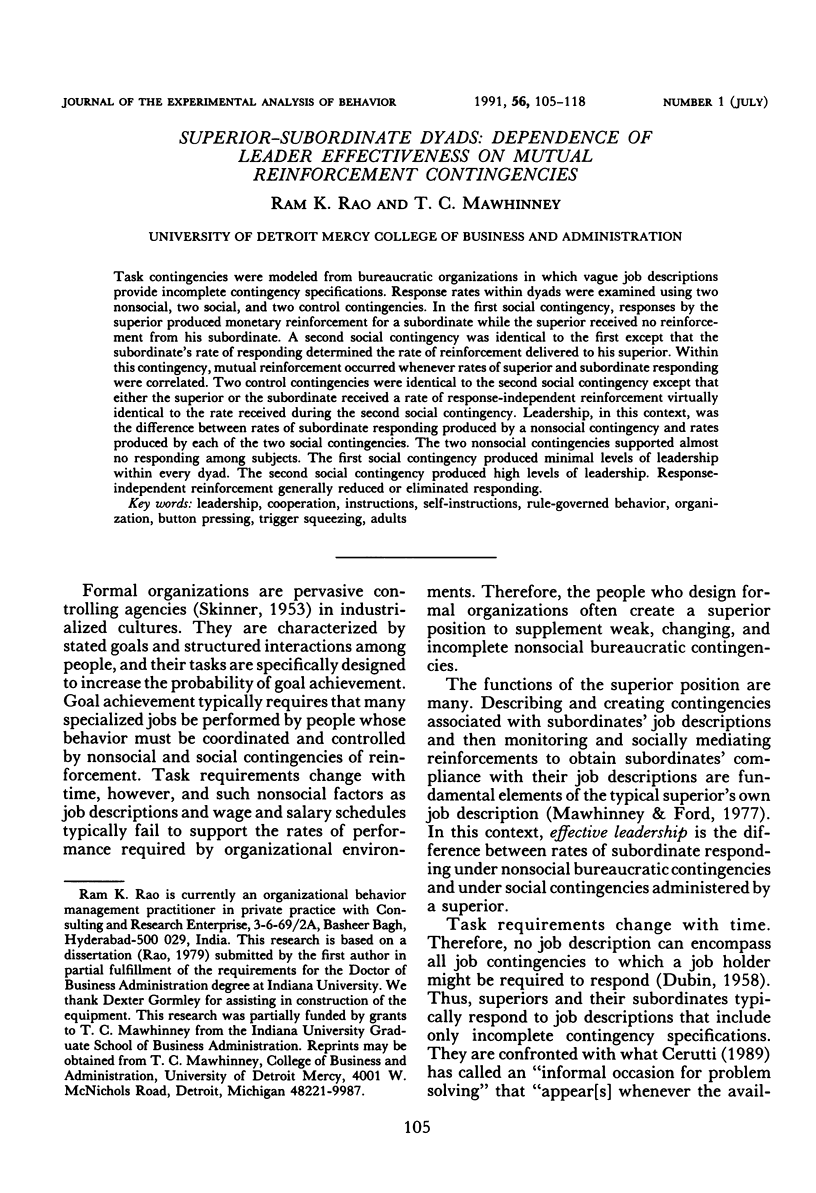
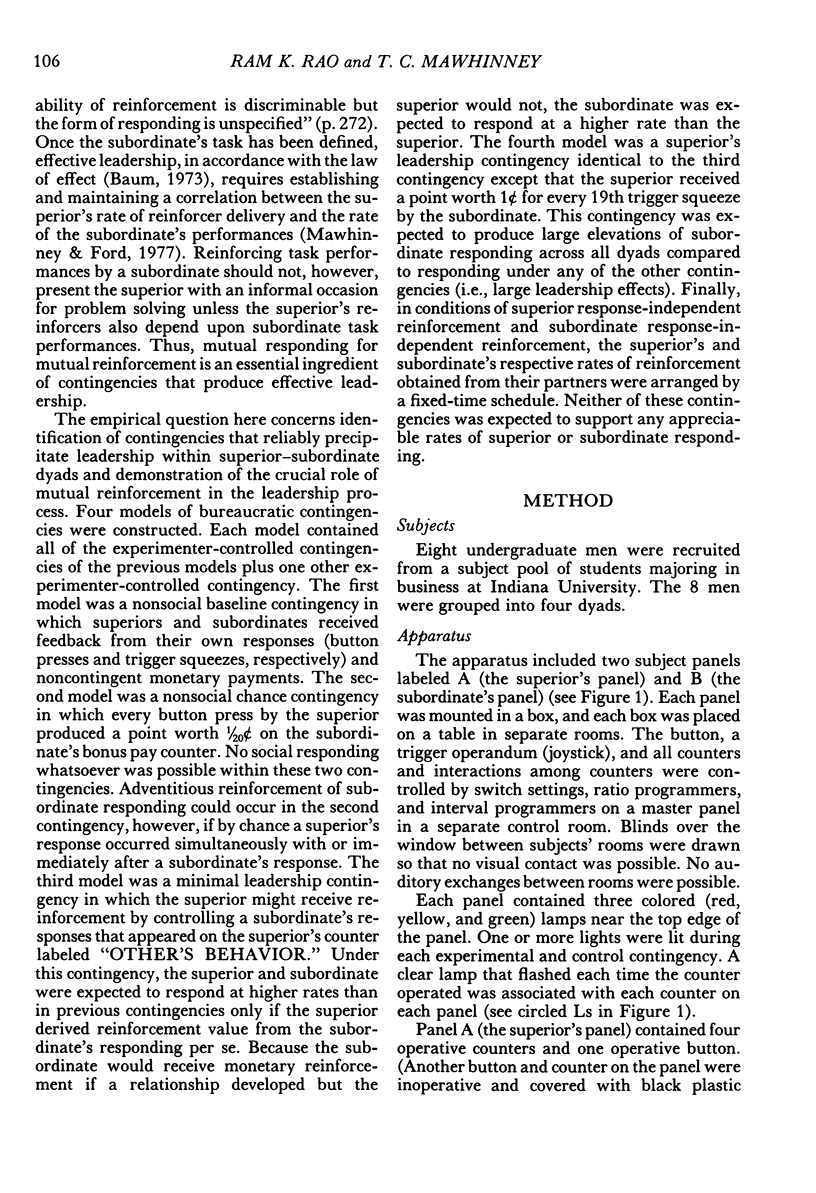
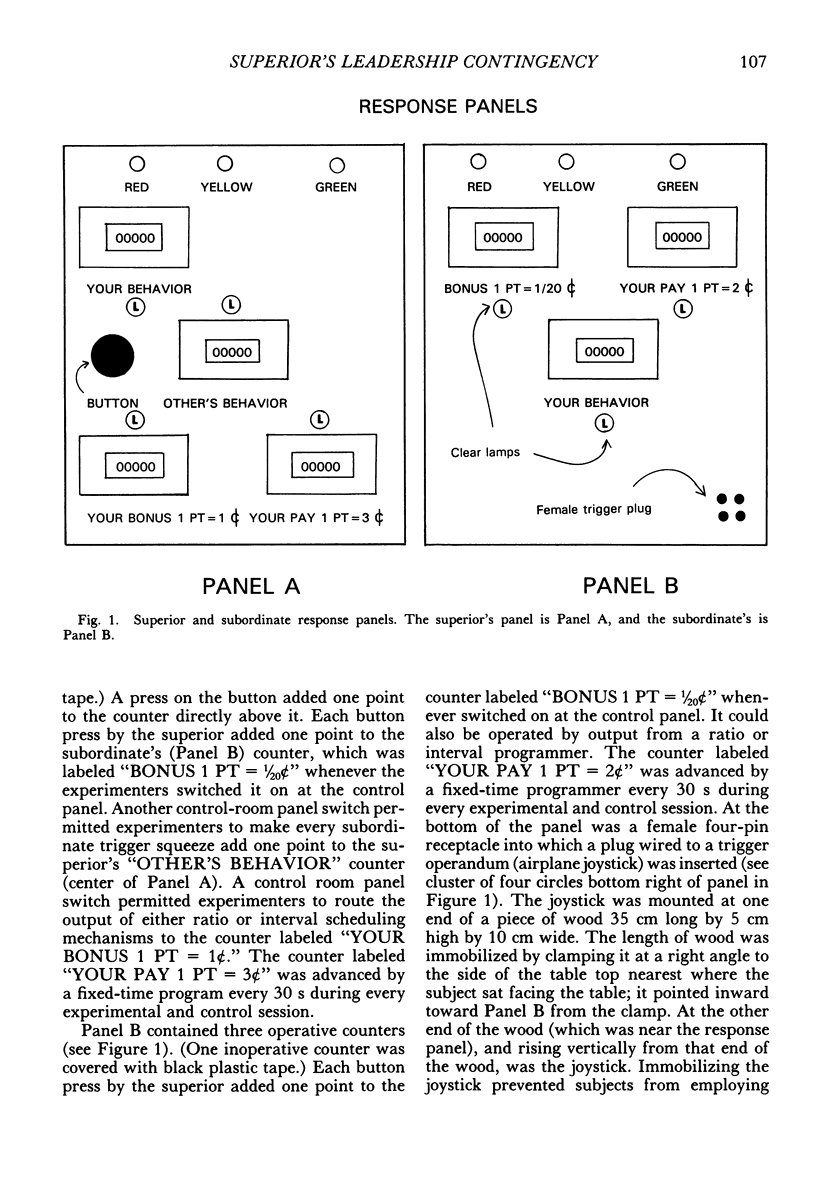
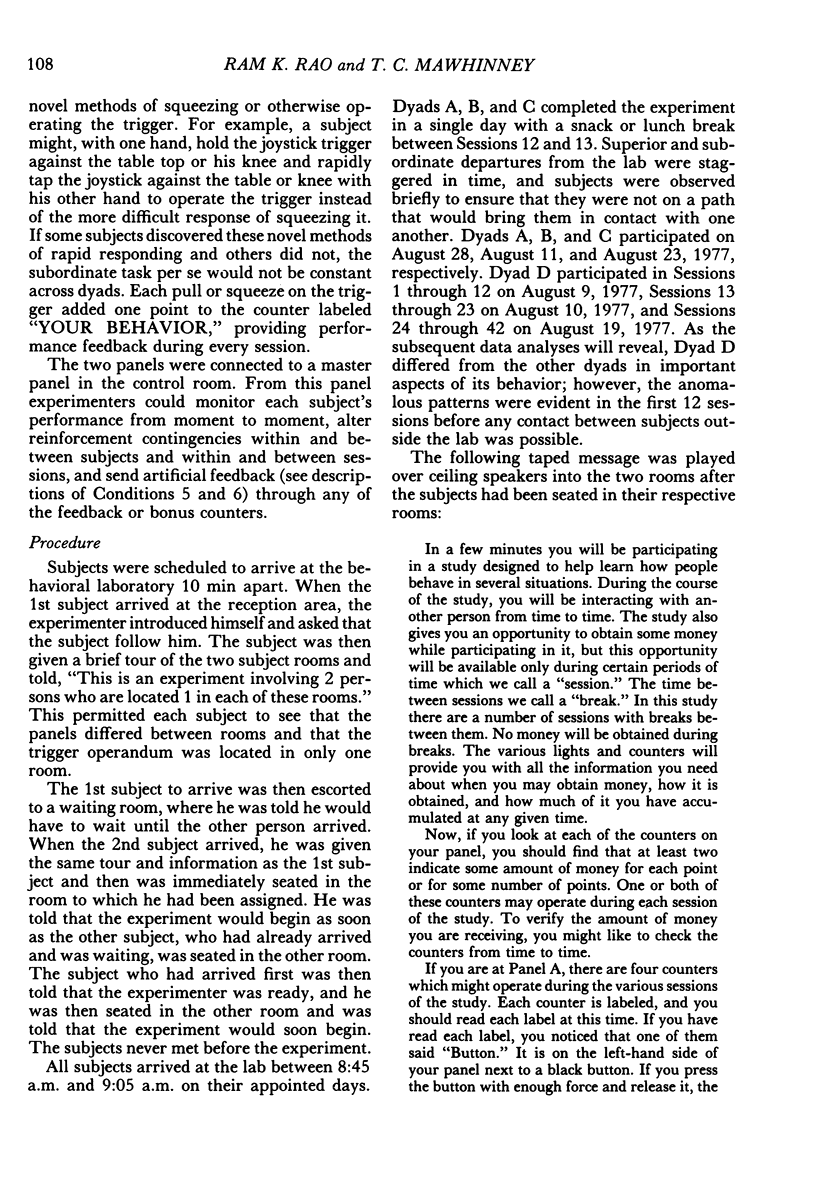
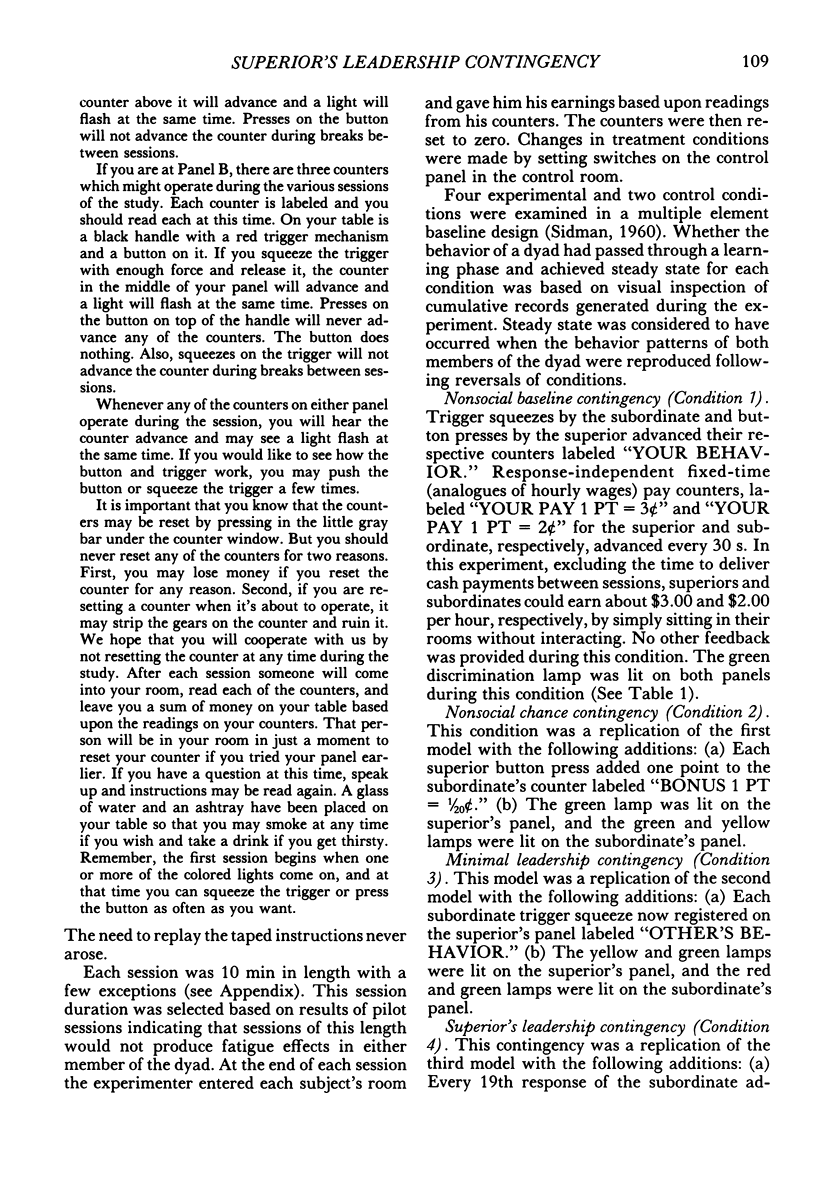
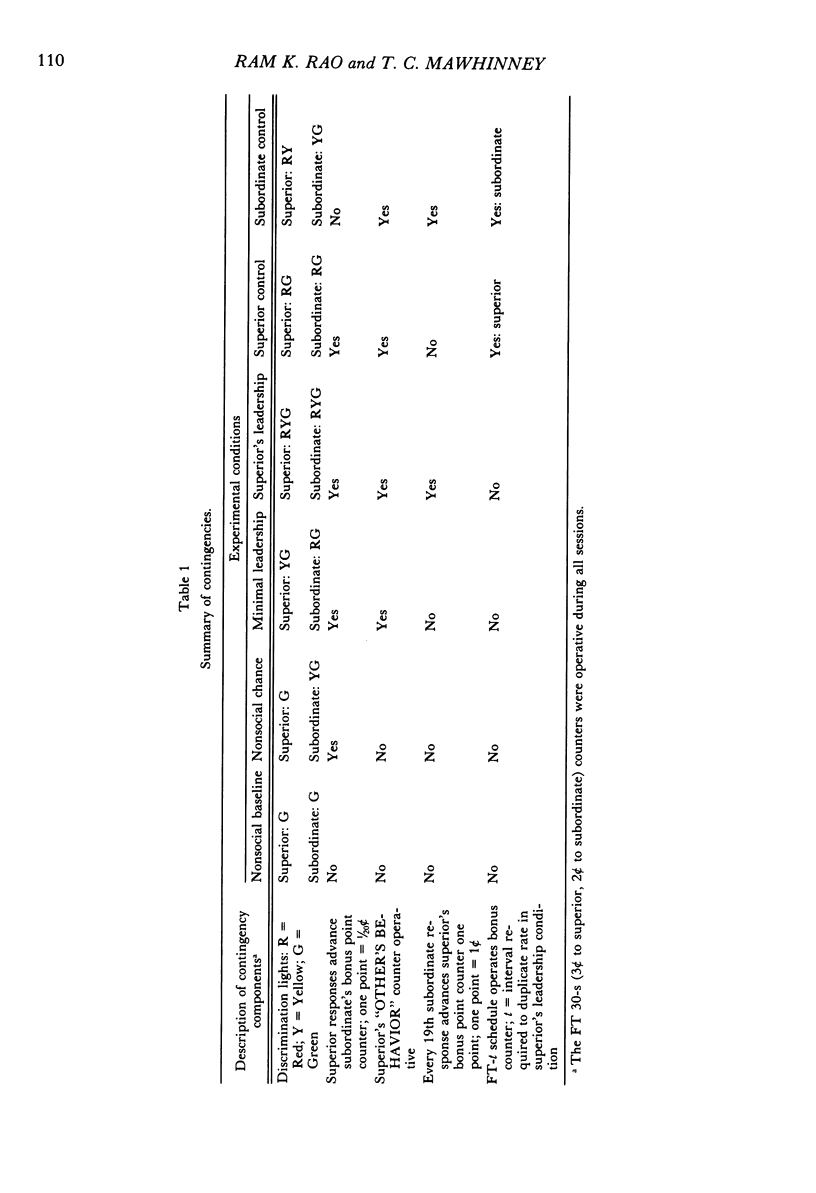
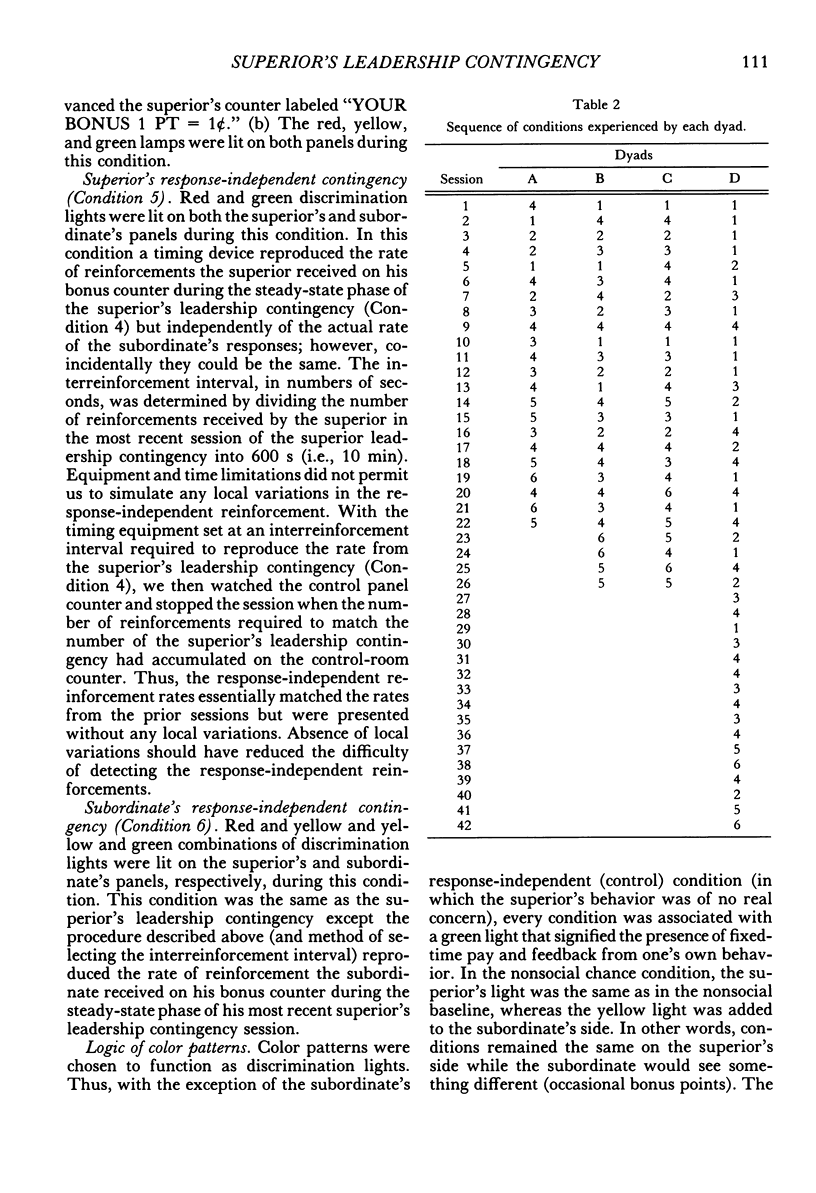
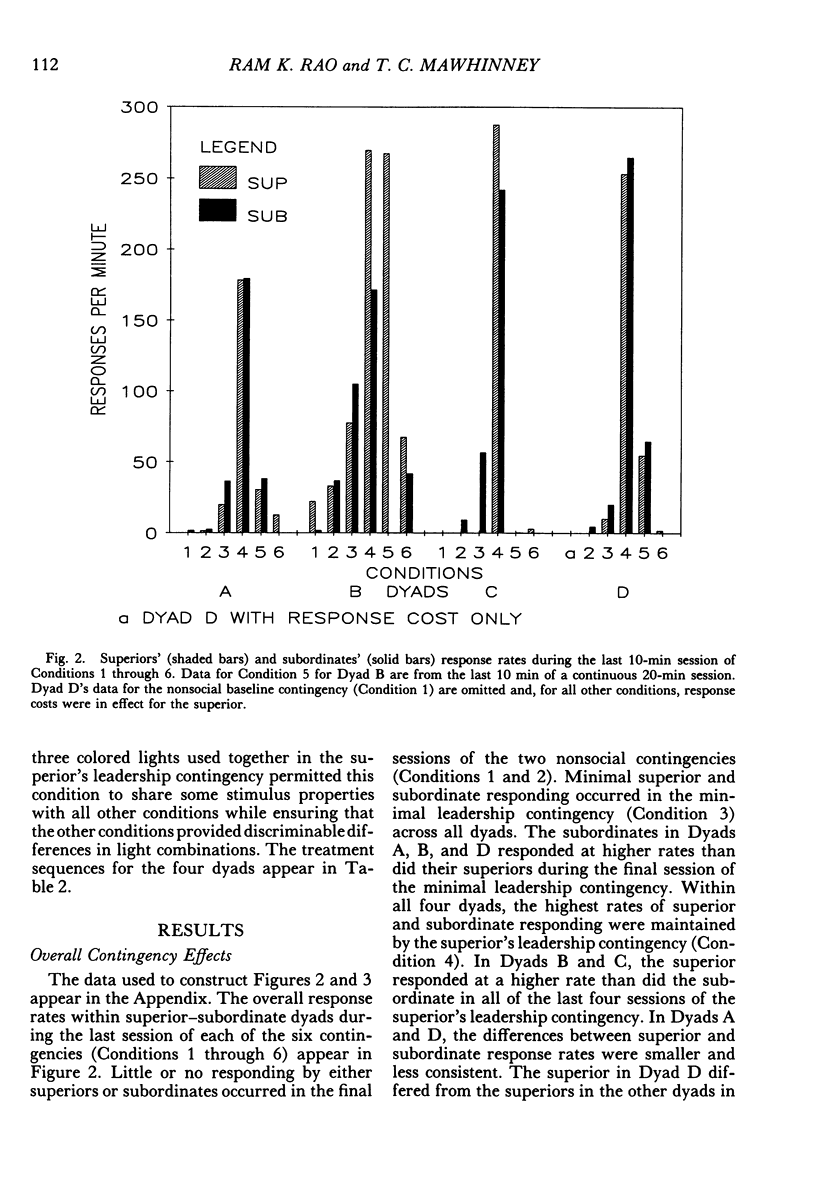
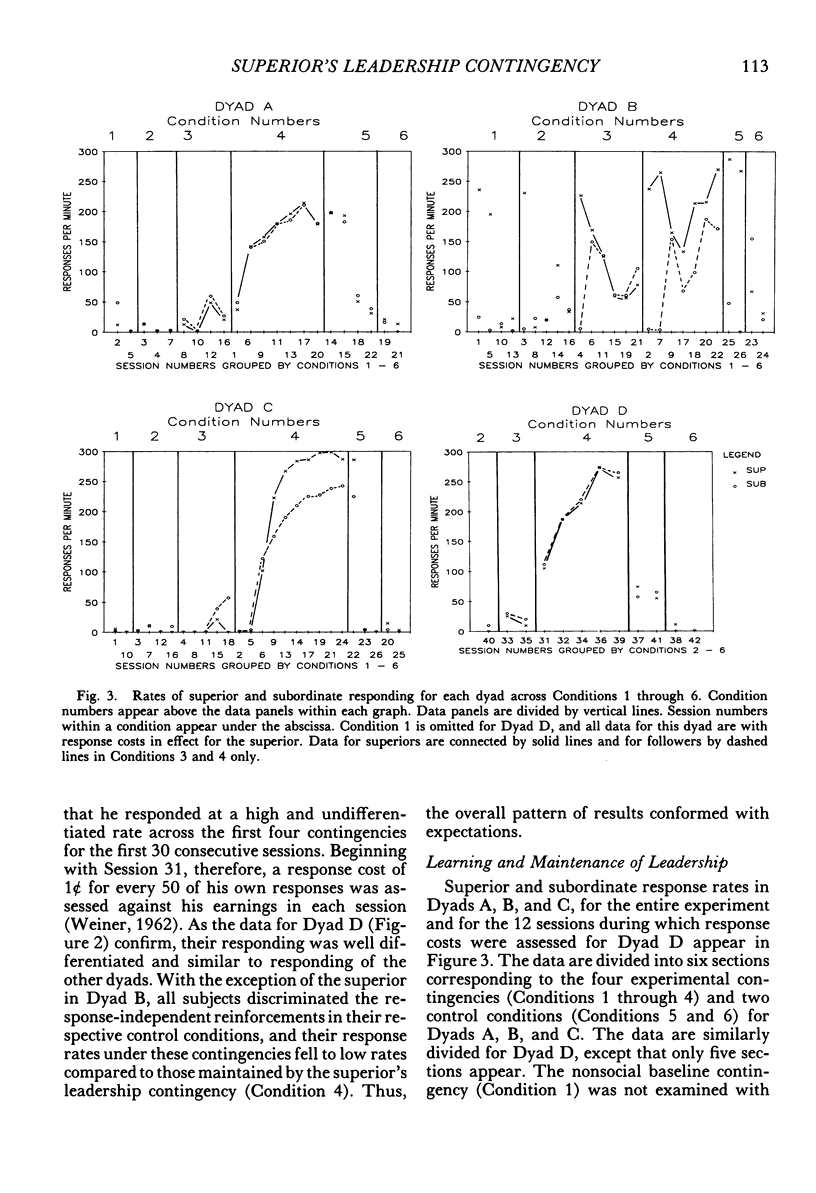
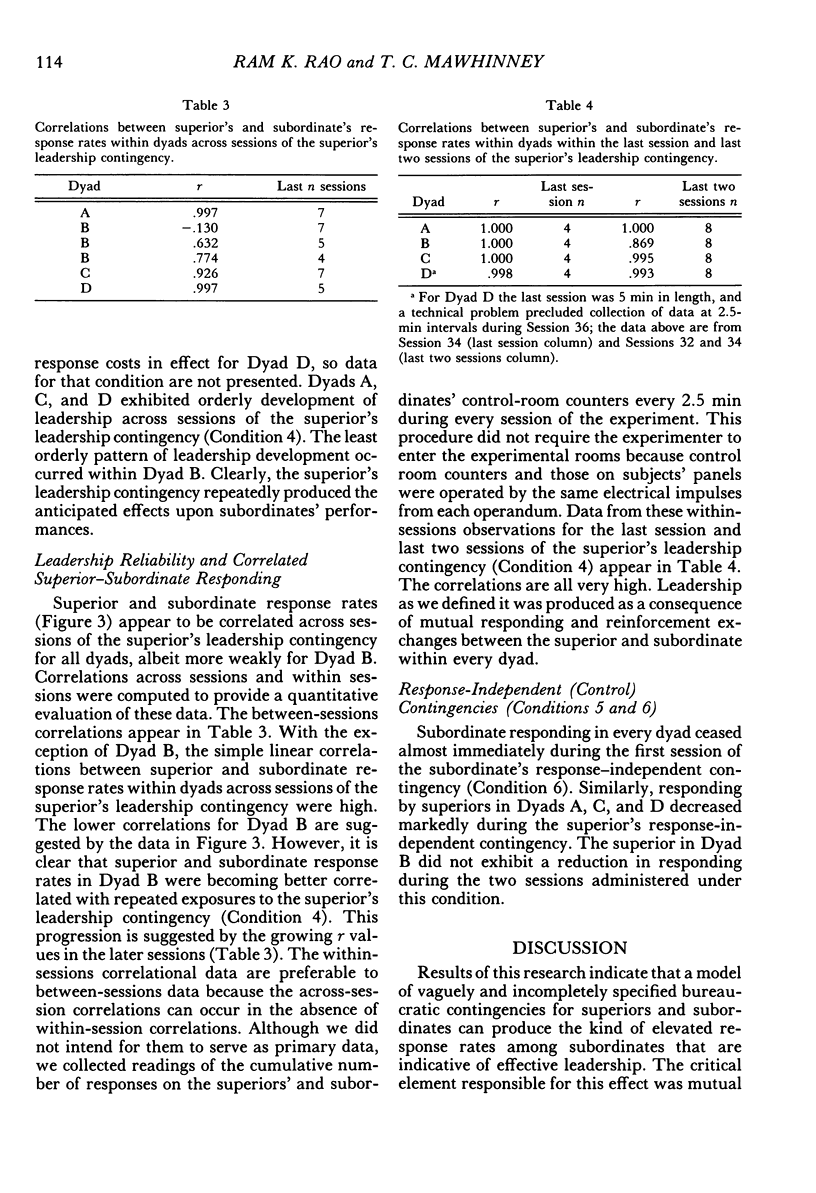
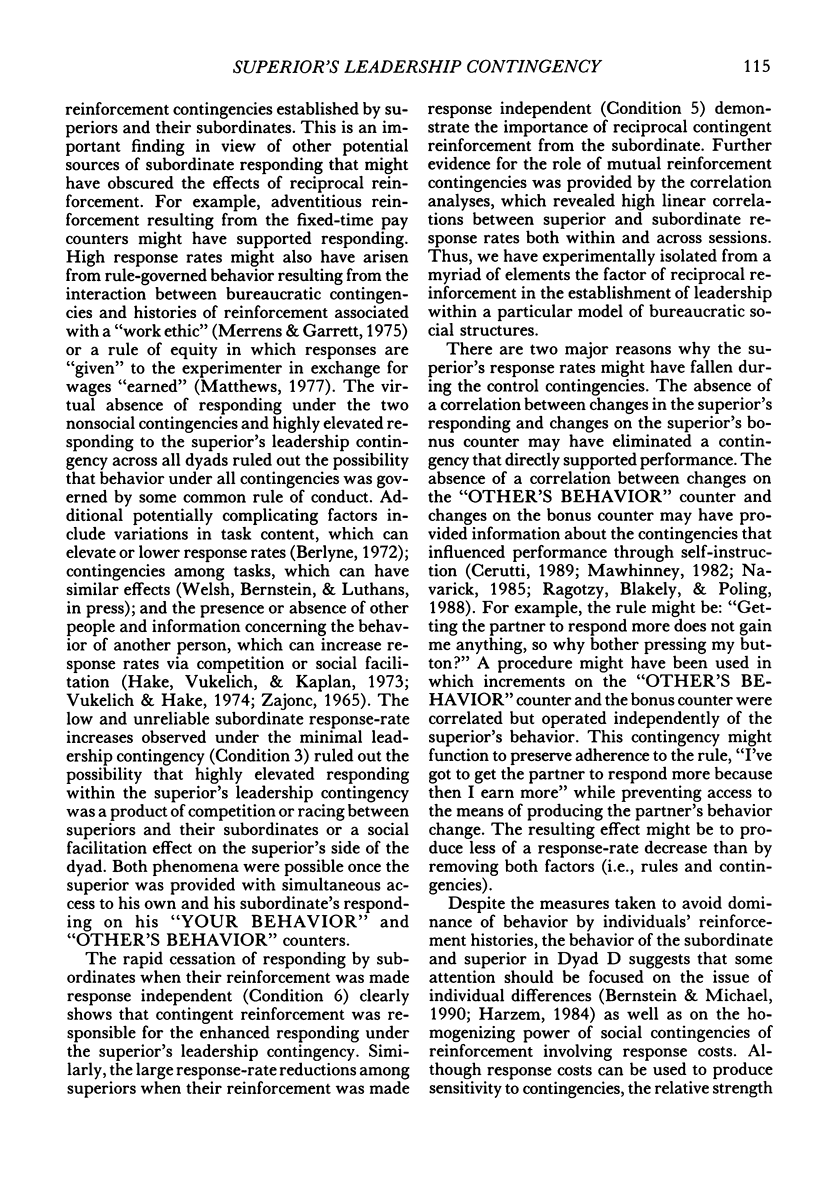
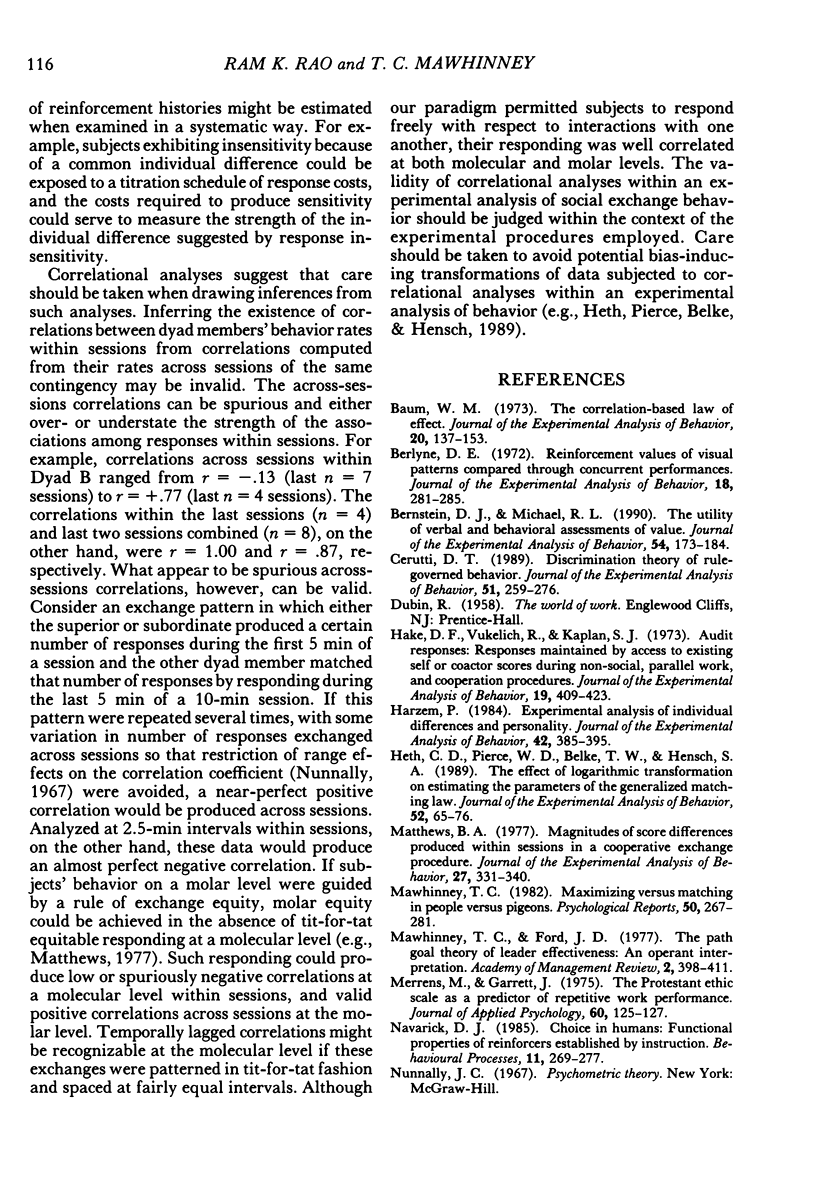
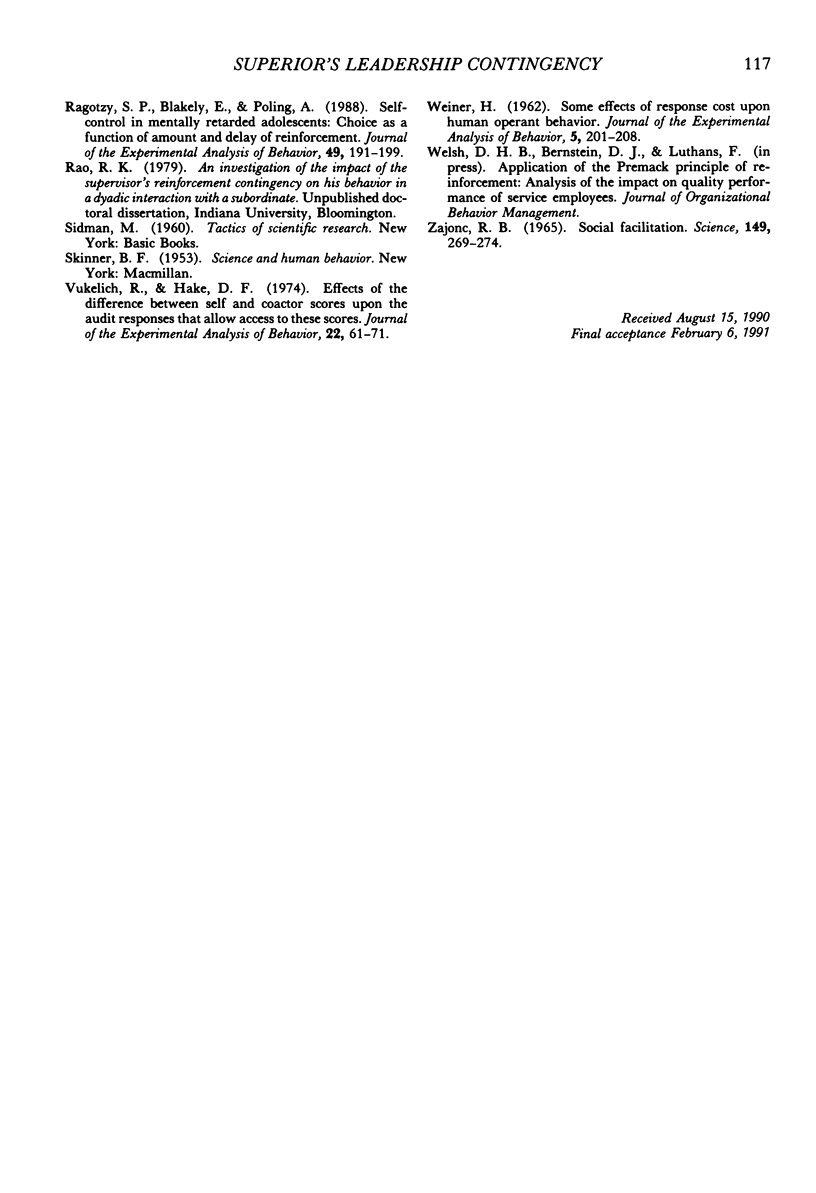
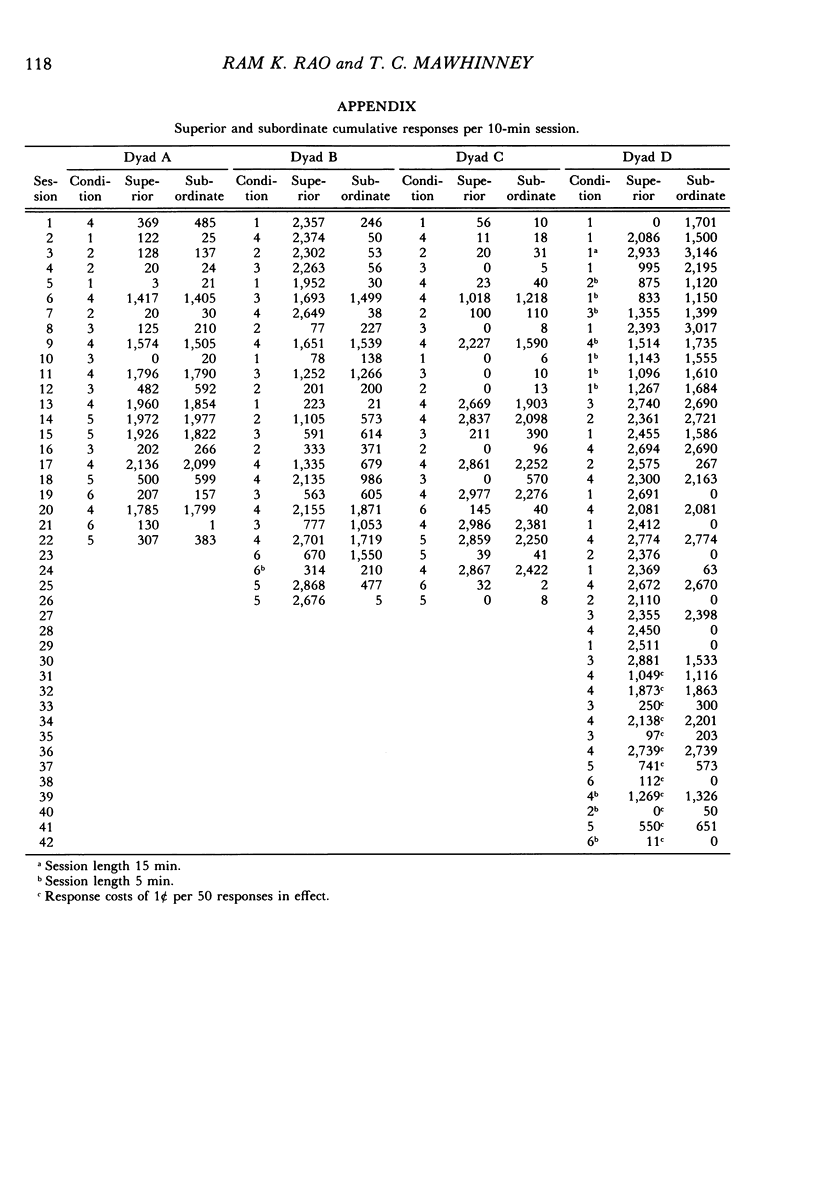
Selected References
These references are in PubMed. This may not be the complete list of references from this article.
- Baum W. M. The correlation-based law of effect. J Exp Anal Behav. 1973 Jul;20(1):137–153. doi: 10.1901/jeab.1973.20-137. [DOI] [PMC free article] [PubMed] [Google Scholar]
- Berlyne D. E. Reinforcement values of visual patterns compared through concurrent performances. J Exp Anal Behav. 1972 Sep;18(2):281–285. doi: 10.1901/jeab.1972.18-281. [DOI] [PMC free article] [PubMed] [Google Scholar]
- Bernstein D. J., Michael R. L. The utility of verbal and behavioral assessments of value. J Exp Anal Behav. 1990 Nov;54(3):173–184. doi: 10.1901/jeab.1990.54-173. [DOI] [PMC free article] [PubMed] [Google Scholar]
- Cerutti D. T. Discrimination theory of rule-governed behavior. J Exp Anal Behav. 1989 Mar;51(2):259–276. doi: 10.1901/jeab.1989.51-259. [DOI] [PMC free article] [PubMed] [Google Scholar]
- Hake D. F., Vukelich R., Kaplan S. J. Audit responses: responses maintained by access to existing self or coactor scores during non-social, parallel work, and cooperation procedures. J Exp Anal Behav. 1973 May;19(3):409–423. doi: 10.1901/jeab.1973.19-409. [DOI] [PMC free article] [PubMed] [Google Scholar]
- Harzem P. Experimental analysis of individual differences and personality. J Exp Anal Behav. 1984 Nov;42(3):385–395. doi: 10.1901/jeab.1984.42-385. [DOI] [PMC free article] [PubMed] [Google Scholar]
- Heth C. D., Pierce W. D., Belke T. W., Hensch S. A. The effect of logarithmic transformation on estimating the parameters of the generalized matching law. J Exp Anal Behav. 1989 Jul;52(1):65–76. doi: 10.1901/jeab.1989.52-65. [DOI] [PMC free article] [PubMed] [Google Scholar]
- Matthews B. A. Magnitudes of score differences produced within sessions in a cooperative exchange procedure. J Exp Anal Behav. 1977 Mar;27(2):331–340. doi: 10.1901/jeab.1977.27-331. [DOI] [PMC free article] [PubMed] [Google Scholar]
- Merrens M. R., Garrett J. B. The Protestant Ethic Scale as a predictor of repetitive work performance. J Appl Psychol. 1975 Feb;60(1):125–127. doi: 10.1037/h0076297. [DOI] [PubMed] [Google Scholar]
- Ragotzy S. P., Blakely E., Poling A. Self-control in mentally retarded adolescents: choice as a function of amount and delay of reinforcement. J Exp Anal Behav. 1988 Mar;49(2):191–199. doi: 10.1901/jeab.1988.49-191. [DOI] [PMC free article] [PubMed] [Google Scholar]
- Vukelich R., Hake D. F. Effects of the difference between self and coactor scores upon the audit responses that allow access to these scores. J Exp Anal Behav. 1974 Jul;22(1):61–71. doi: 10.1901/jeab.1974.22-61. [DOI] [PMC free article] [PubMed] [Google Scholar]
- WEINER H. Some effects of response cost upon human operant behavior. J Exp Anal Behav. 1962 Apr;5:201–208. doi: 10.1901/jeab.1962.5-201. [DOI] [PMC free article] [PubMed] [Google Scholar]
- ZAJONC R. B. SOCIAL FACILITATION. Science. 1965 Jul 16;149(3681):269–274. doi: 10.1126/science.149.3681.269. [DOI] [PubMed] [Google Scholar]


